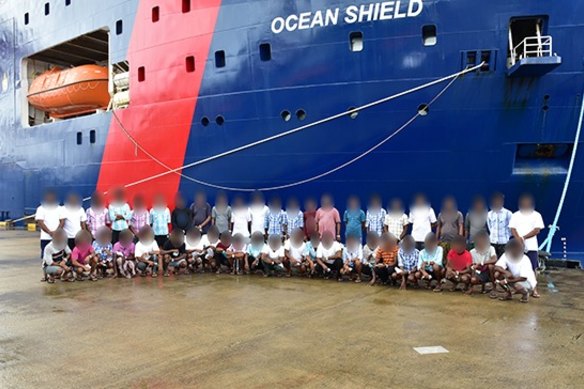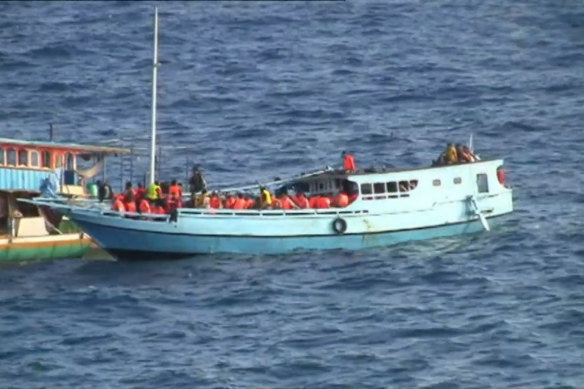
This masthead has chosen not to describe the self-harm methods they depict.
Australia has strict guidelines on how mental health issues are broadcast, while advertising standards are so rigorous they frown on even relatively trivial matters such as cyclists riding without bells.
‘These [ads] wouldn’t be accepted in Australia … why does the Australian government feel they are appropriate in another country?’
Gavin Northey, a marketing expert at Griffith University
“A review of the [advertising] codes suggests these wouldn’t be accepted in Australia,” said Griffith University marketing expert, Dr Gavin Northey, who reviewed two of the commercials for this masthead.
“This raises the question: Why does the Australian government feel they are appropriate in another country?”
He said the ads trivialise mental health, particularly in a highly marginalised group and the campaign overlooks the life experiences and struggles of such people.
Loading
Dr Rohan Miller from the University of Sydney, who also reviewed the ads, said the “shock and awe” style would be unlikely to stop attempts at illegal migration over time.
“There is no doubt, the shock and awe becomes repugnant and unethical with the references to suicide,” he said.
“At best, it can be argued these ads are well-intentioned to stop illegal migration on boats not suited for the journey, but badly executed.”
The 30-second pieces are part of Australia’s broader Zero Chance campaign, which began in 2019 and is used in 11 countries. There have been at least six similar Sri Lankan ads with themes of self-harm released at different times over the last year.
It is unclear how widely the Sri Lankan ads have been distributed, but the Australian government said the campaign runs across digital and “traditional” media. The digital forms, at least, do not feature contact numbers for mental health support services.

Australian Border Force ship Ocean Shield arrives in Colombo, Sri Lanka in August 2022 to return 46 Sri Lankan men who had been intercepted at sea while trying to reach Australia. Credit: Sri Lanka Navy
A spokesman for the Australian Border Force said the campaign was “agile and responsive, structured to ensure resources can pivot quickly to address specific threats and misinformation circulating, down to the community level within the target markets.”
According to the ABF, almost 1200 Sri Lankans were detained by the Sri Lankan navy while attempting to reach Australia in 2022.
“Since the launch of the Zero Chance campaign in 2019, the campaign has reached approximately 325.1 million potential irregular immigrants by ... attracting 806.1 million video views,” the spokesman said.
Loading
Like other leading mental health advocacy groups, Mindframe declined to comment publicly on the Australian government’s advertising. But it referred this masthead to its guidelines.
“Studies indicate that content, which includes explicit or technical descriptions and images of methods or locations used for suicide, have been linked to increased rates of suicide,” one of them reads.
Northey said some would argue the commercials were a cost-effective means of deterrence, and the benefits of potentially preventing people risking their lives on boats outweighed any harm in the delivery.
He said the government should research Australians’ attitudes to the content being distributed on their behalf.
“The feedback from Australians might be alarmingly negative for the nation’s policymakers,” he said.

The Australian government has produced advertisements aimed at stopping asylum seekers getting on illegal boats in Sri Lanka.Credit: ninevms
The government has previously been criticised for trivialising the plight of persecuted people in Sri Lanka with gimmicky advertisements playing off Pac-Man and Spin the Wheel games.
A previous iteration of the Zero Chance campaign asked budding Sri Lankan filmmakers to come up with compelling anti-boat messaging with the lure of a prize. The competition proposed “that everyday Sri Lankans convince their neighbours to relinquish their human rights and win a digital SLR camera or a drone,” former Tamil refugee Shankar Kasynathan wrote in this masthead in late 2021.
“The humiliation and the degradation is destructive.”
A Border Force spokesman said the cost of Zero Chance was “commercial in confidence”.
1800RESPECT - Confidential counselling and support services. Lifeline -131 114. Beyond Blue - 1300 224 636.
Get a note directly from our foreign correspondents on what’s making headlines around the world. Sign up for our weekly What in the World newsletter.









 Add Category
Add Category